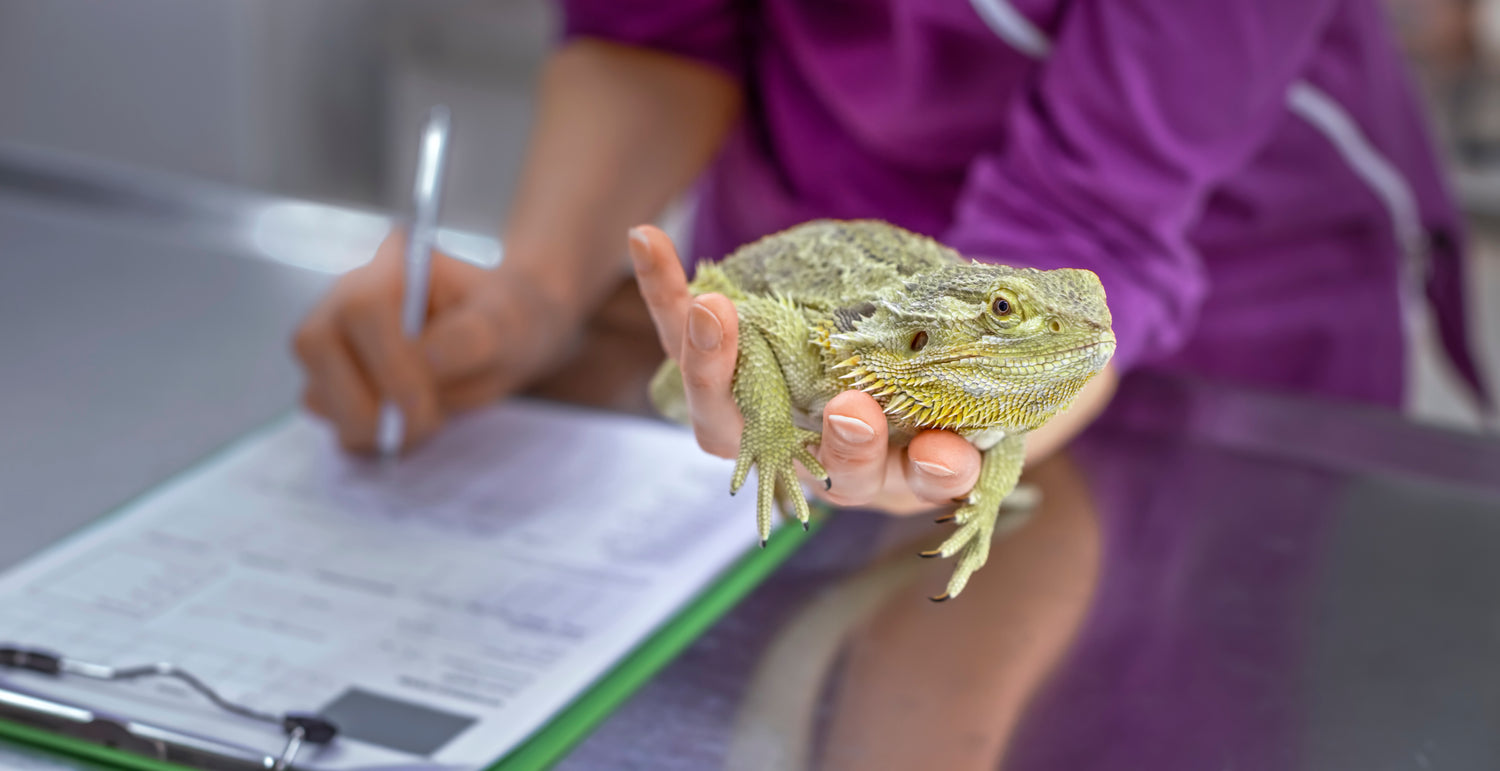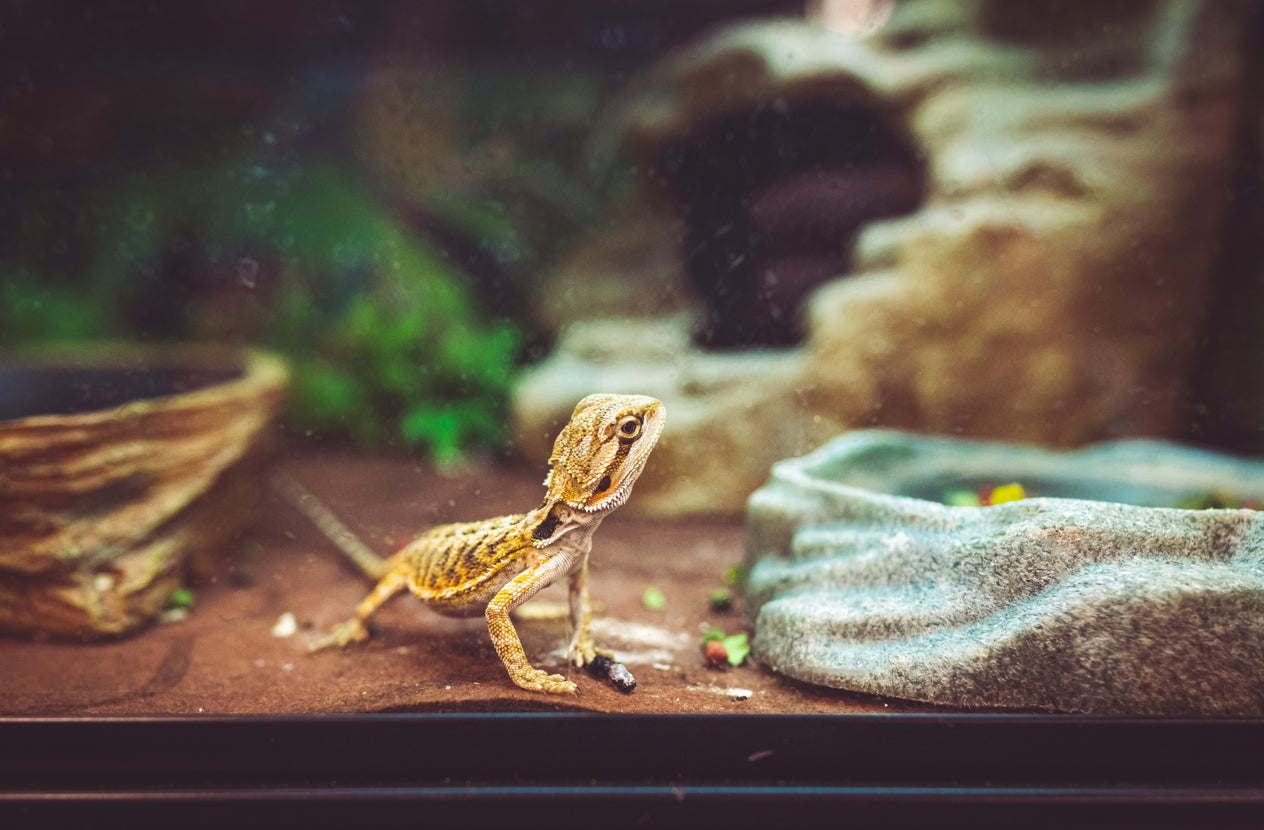Monitoring your bearded dragon’s poop is an important part of its care. If you have recently purchased a new beardie, it may not poop right away due to the stress of moving but this needs to be monitored. If it lasts more than a week then there could be a serious problem.
This can also happen if you’re moving it to a new enclosure. As soon as it adjusts to its new surroundings which usually takes about a week, the bearded dragon’s bowel moments will get back to normal as long as its enclosure has the correct husbandry.
Also, during brumation, which is similar to hibernation in mammals, your beardie won’t eat as much (or at all), so it won’t have bowel movements as often as it normally would.
Here are some of the most typical bearded dragon BM’s look like:
Brown and White
The most common bowel movement type in bearded dragons will be brown and white. the brown part will be log-shaped with the white part on the end. The white color is the urate or their pee – waste product from your beardie’s kidneys. Bearded dragons don’t pee, so urates come out with their BM.
Chalky Hard Urate
The white part should be soft. If the white part of your pet is chalky and hard, this means your beardie has too much calcium in their diet. You will need to amend your dragon's diet, either by offering less calcium-rich foods or usually by cutting back on the calcium supplements.
All White
All white poop in your dragon can mean that he/she is overly-hydrated, as the white part is urate, and this should not concern you. However if the white part Is hard or chalky or off-color then see the relevant section in this article.
Runny Poop
Runny poop means that your beardie has diarrhea, particularly if your pet is going frequently. The two most common reasons for diarrhea in dragons are diet (overhydration) and parasites (most commonly, coccidia). Overhydration is usually caused by feeding your bearded dragon too many leafy greens, fruits or horn worms. Parasite-caused runny BMs tend to be more smelly than normal, you will also notice that the poop is more of an unformed mess, compared to an overhydration runny poop. If this is the case then it needs to be treated as soon as possible since diarrhea can severely dehydrate your pet.
Yellow Poop or Yellow Urate
The yellow color of your lizard’s BM can come from red fruits but can also be indicative of liver problems that would need bloodwork to determine. However, if your dragon has off-color yellowish urates, it may be a sign that your pet is dehydrated, you will need to add more hydration to your dragon's diet.
Blood in Your Bearded Dragon’s Poop
Blood in your pet’s stool can be upsetting. However, you may want to wait for another poop or two to see if BMs normalize. If blood in your dragon’s stool re-occurs, this may be due to constipation or internal bleeding (intestinal or stomach).
In case of constipation, your beardie may also appear lethargic, lose appetite and reject their food, display pale color, and rapid weight loss. This could mean that some of the stool is stuck in their intestines, in which case a gentle belly massage and warm bath can help, along with plenty of hydration, However if it persists then veterinary attention should be sought.




45 comments
Claire
what do i do if my bearded dragon has a little red in its pee/poop
Reptile Supply
Hi David, the unusual color is likely diet-related. If it persists even after you stop offering watermelon, it would be best to schedule an appointment with an experienced reptile vet.
Reptile Supply
Hi Tyler, those small white poops are probably urate, which is the reptile version of urine. However if your pet continues to have abnormal bowel movements, it wouldn’t hurt to take them to an experienced reptile vet for an exam.
Reptile Supply
Hi Chris, if the red color persists, it would be a good idea to schedule an appointment with an experienced reptile veterinarian. Meanwhile, it’s probably best not to feed radishes to your dragon anymore, as they’re not a great food for bearded dragons.
Tyler
my beardie keeps having small white poops that would normally be in his regularBM
what do I do??
Leave a comment
All comments are moderated before being published.
This site is protected by hCaptcha and the hCaptcha Privacy Policy and Terms of Service apply.